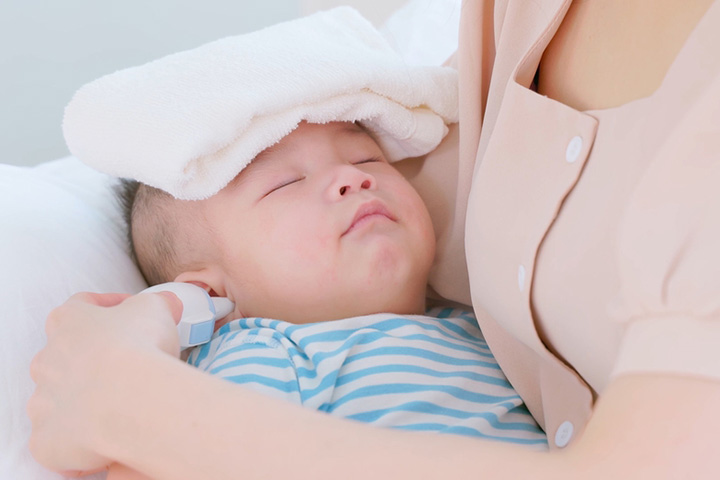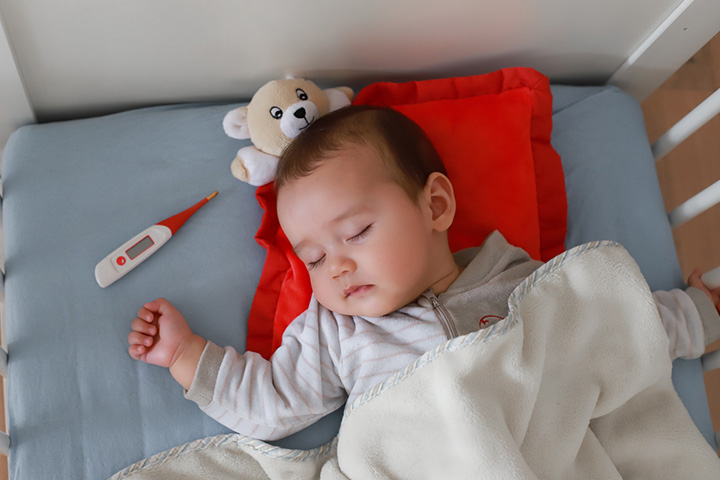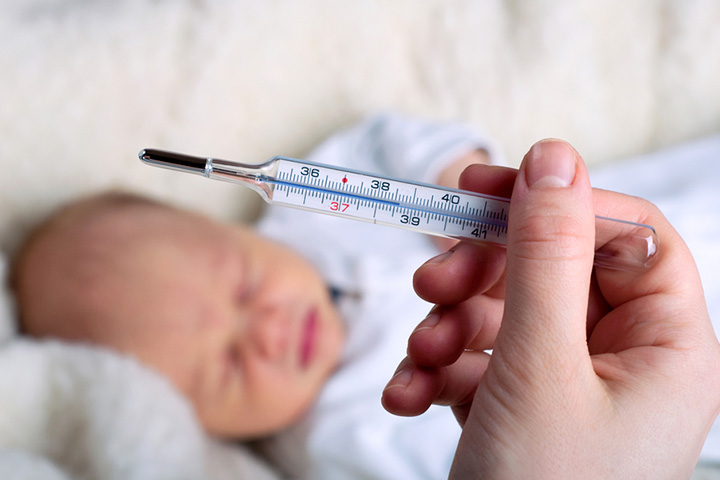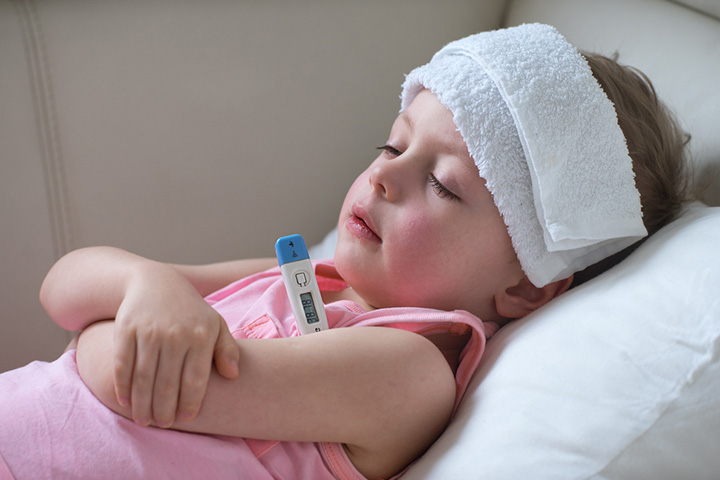
Image: Shutterstock
As a parent, your baby’s well-being is your top priority, and when it comes to their health, it’s natural to feel concerned, especially when they have a fever. Fevers in babies can be worrisome, but understanding the basics and having a plan can help you navigate through this common childhood ailment with confidence. Let’s delve into what you need to know about fever in babies, including causes, how to measure their temperature correctly, when to seek help, and effective treatment tips. Read on to know more!
- What Is A Fever?
A fever is a temporary increase in body temperature that often indicates your baby’s immune system is fighting off an infection or illness. While it can be unsettling to witness your little one with a fever, it’s important to remember that fever itself is not a disease but a sign that the body is responding to an underlying issue.
- What Is Considered A Fever In Babies?
For babies, a fever is generally considered a rectal temperature of 100.4°F (38°C) or higher (1). However, keep in mind that what’s considered a fever can vary slightly depending on the method of temperature measurement. It’s also worth noting that your baby’s normal temperature may fluctuate throughout the day.
- Causes Of Fever In Babies
Image: Shutterstock
Fever in babies can be triggered by a wide range of factors, such as infections (like colds, flu, ear infections), teething, immunizations, or less common conditions like urinary tract infections. It’s essential to be vigilant and observe any other symptoms your baby might be displaying to help determine the cause of the fever.
- How To Take A Baby’s Temperature
Taking your baby’s temperature accurately is crucial for proper evaluation. The safest and most accurate method for babies under three months is using a rectal thermometer. For older babies, you can use an ear thermometer or a temporal artery thermometer. Always follow the manufacturer’s instructions for accurate readings.
- Temperature Differences Between Methods
It’s important to note that temperatures can vary depending on the method used. Rectal temperatures tend to be slightly higher than oral or axillary (underarm) measurements. When comparing readings, consider the method used to measure temperature to interpret the results accurately.
- Signs Of Fever In Babies
Image: Shutterstock
Apart from the elevated temperature, other signs of fever in babies might include fussiness, reduced appetite, sleep disturbances, and increased clinginess. Pay attention to changes in behavior or unusual symptoms to better understand your baby’s discomfort.
- What To Do When Your Baby Has A Fever
When your baby has a fever, focus on keeping them comfortable. Dress them in lightweight clothing, offer plenty of fluids, and create a calm environment to help them rest. Over-the-counter fever reducers like infant acetaminophen or ibuprofen can be used under the guidance of your pediatrician, but always follow dosing instructions carefully (2).
- Treatment Of Fever In Babies
The main goal when treating a fever in babies is to address their discomfort and provide relief. While medication can help reduce fever, it’s important not to overtreat or solely focus on lowering the temperature. Treating the underlying cause, such as an infection, is equally vital.
- Tips And Tricks For Handling Baby Fevers
Image: Shutterstock
1. Hydration
Ensure your baby is staying hydrated by offering breast milk, formula, or electrolyte solutions if they’re older.
2. Comfort
Use cool compresses to soothe your baby’s forehead, but avoid cold baths as they might cause shivering.
3. Rest
Encourage your baby to rest as much as possible, and create a calm environment to promote sleep.
4. Monitor Symptoms
Keep a close eye on your baby’s behavior and symptoms, noting any changes that could indicate worsening.
- When To Call Your Healthcare Provider
While most fevers in babies are caused by common illnesses and are usually harmless, there are instances when you should contact your healthcare provider. Reach out if your baby is under three months old and has a rectal temperature of 100.4°F (38°C) or higher, if the fever lasts for more than a couple of days, or if your baby appears extremely unwell or has difficulty breathing.
- Fever Symptoms That Need Immediate Attention
Image: Shutterstock
Certain symptoms accompanying a fever in babies require immediate medical attention. If your baby has a high fever (above 104°F or 40°C), is lethargic, has a severe headache, a stiff neck, difficulty breathing, a rash, or is not responding to your attempts to cool them down, seek medical help urgently.
While fevers in babies can be concerning, they are often a sign that the body is fighting an infection. By knowing the basics of temperature measurement, observing your baby’s behavior, and seeking medical advice when necessary, you can confidently manage your baby’s fever and provide the comfort and care they need to recover swiftly. Always remember that you’re not alone on this journey – your pediatrician is there to guide you every step of the way. Let us know in the comments your experience of dealing with your baby’s fever!
















